Related Research Articles
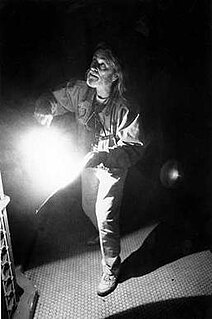
Conrad Lafcadio Hall, ASC was a French Polynesian-born American cinematographer. Named after writers Joseph Conrad and Lafcadio Hearn, he was best known for photographing such films as In Cold Blood, Cool Hand Luke, Butch Cassidy and the Sundance Kid, American Beauty, and Road to Perdition. For his work he garnered a number of awards, including three Academy Awards and three BAFTA Awards.

Todd-AO is an American post-production company founded in 1953 by Mike Todd and Robert Naify, providing sound-related services to the motion picture and television industries. For more than five decades, it was the worldwide leader in theater sound. The company now operates one facility in the Los Angeles area.
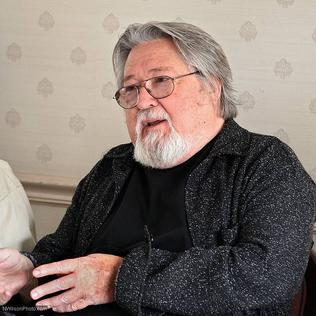
László KovácsASC was a Hungarian cinematographer who was influential in the development of American New Wave films in the 1970s, collaborating with directors like Peter Bogdanovich, Richard Rush, Dennis Hopper, Norman Jewison, and Martin Scorsese. Most famous for his work on Easy Rider (1969) and Five Easy Pieces (1970), Kovács was the recipient of numerous awards, including three Lifetime Achievement Awards. He was an active member of the American Society of Cinematographers and was member of the organization's board of directors.
Cinema Products Corporation was an American manufacturer of motion picture camera equipment.

Panavision is an American motion picture equipment company founded in 1953 specializing in cameras and lenses, based in Woodland Hills, California. Formed by Robert Gottschalk as a small partnership to create anamorphic projection lenses during the widescreen boom in the 1950s, Panavision expanded its product lines to meet the demands of modern filmmakers. The company introduced its first products in 1954. Originally a provider of CinemaScope accessories, the company's line of anamorphic widescreen lenses soon became the industry leader. In 1972, Panavision helped revolutionize filmmaking with the lightweight Panaflex 35 mm movie camera. The company has introduced other cameras such as the Millennium XL (1999) and the digital video Genesis (2004).

The Arri Group is a German manufacturer of motion picture film equipment. Based in Munich, the company was founded in 1917. It produces professional motion picture cameras, lenses, lighting and post-production equipment. Hermann Simon mentioned this company in his book Hidden Champions of the 21st Century as an example of a "hidden champion". The Arri Alexa camera system was used to film Academy Award winners for Best Cinematography including Hugo, Life of Pi, Gravity, Birdman, The Revenant and 1917.

Philip H. Lathrop, A.S.C. was an American cinematographer noted for his skills with wide screen technology and detailed approach to lighting and camera placement. He spent most of his life in movie studios. Lathrop was known for such films as Touch of Evil (1958), Lonely Are the Brave (1962), The Americanization of Emily (1964), The Cincinnati Kid (1965), Point Blank (1967), Finian's Rainbow (1968), The Traveling Executioner (1970), Portnoy's Complaint (1972), Earthquake (1974), Swashbuckler (1976), The Driver (1978), Moment by Moment (1978), A Change of Seasons (1980), Foolin' Around (1980), Loving Couples (1980), and Deadly Friend (1986).
Robert Gottschalk was an American camera technician and founder of Panavision.
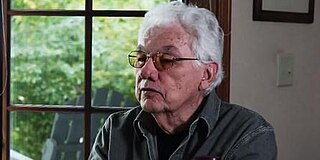
Gordon Hugh Willis Jr., ASC was an American cinematographer and film director. He is best known for his photographic work on eight Woody Allen films, six Alan J. Pakula films, four James Bridges films, and all three films from Francis Ford Coppola's The Godfather series.
Meredith Merle Nicholson was an American cinematographer. He worked behind the camera on low-budget films of the 1950s, hit television series in the 1960s, and comedies, dramas, and made-for-TV movies in the 1970s and 1980s.
Super Panavision 70 is the marketing brand name used to identify movies photographed with Panavision 70 mm spherical optics between 1959 and 1983.

Ultra Panavision 70 and MGM Camera 65 were, from 1957 to 1966, the marketing brands that identified motion pictures photographed with Panavision's anamorphic movie camera lenses on 65 mm film. Ultra Panavision 70 and MGM Camera 65 were shot at 24 frames per second (fps) using anamorphic camera lenses. Ultra Panavision 70 and MGM Camera 65's anamorphic lenses compressed the image 1.25 times, yielding an extremely wide aspect ratio of 2.76:1.

Myra Breckinridge is a 1970 American comedy film based on Gore Vidal's 1968 novel of the same name. The film was directed by Michael Sarne, and featured Raquel Welch in the title role. It also starred John Huston as Buck Loner, Mae West as Leticia Van Allen, Farrah Fawcett, Rex Reed, Roger Herren, and Roger C. Carmel. Tom Selleck made his film debut in a small role as one of Leticia's "studs." Theadora Van Runkle was costume designer for the film, though Edith Head designed West's costumes.
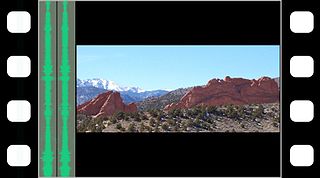
Anamorphic format is the cinematography technique of shooting a widescreen picture on standard 35 mm film or other visual recording media with a non-widescreen native aspect ratio. It also refers to the projection format in which a distorted image is "stretched" by an anamorphic projection lens to recreate the original aspect ratio on the viewing screen. The word anamorphic and its derivatives stem from the Greek anamorphoun, compound of morphé with the prefix aná. In the late 1990s and 2000s, anamorphic lost popularity in comparison to "flat" formats such as Super 35 with the advent of digital intermediates; however in the years since digital cinema cameras and projectors have become commonplace, anamorphic has experienced a considerable resurgence of popularity, due in large part to the higher base ISO sensitivity of digital sensors, which facilitates shooting at smaller apertures.
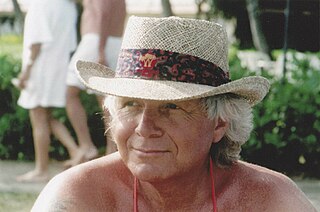
Thomas Del Ruth is a retired American cinematographer.
Michel Hugo was a French-American cinematographer and academic. His film and television credits included Dynasty, Melrose Place and Mission: Impossible. In 2001, Hugo became a professor at the film department of the University of Nevada, Las Vegas.
Chris J. Condon, born Christo Dimitri Koudounis, was the inventor of 3D lens used by his company StereoVision, a cinematographer, and founder of Sierra Pacific Airlines.
Gerald Leslie "Gerry" Turpin was an English cinematographer.
Takuo Miyagishima was a Japanese-American design engineer who worked for Panavision. He was responsible for many of the company's innovations in motion picture photography and projection.